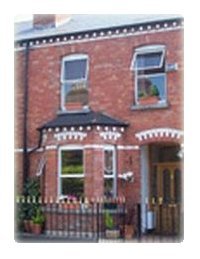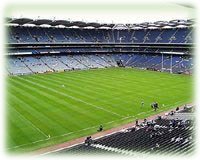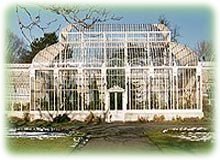
 5 Upper Saint Columbus Road
5 Upper Saint Columbus Road
Drumcondra
Dublin 9
Ireland
Tel: 00353-1-8300058
Fax: 01(353)-8300058
Mobile: 087-9003440
E-mail: acarahouse@hotmail.com

| LOCAL ATTRACTIONS | |
| Drumcondra the location of cara House is steeped in local history and contains many places of interest. Drumcondra is named from the gaelic Drumcondraighe, or the Ridge of the Condraighe, who were a tribe from the 2nd century. | |
| Croke Park | |
| Croke Park named in honour of the association's first patron, Archbishop Croke of Cashel is about 30 minutes walk from cara House is the stadium that hosts the GAA all Ireland sporting fixtures.It is one of the largest facilities in Europe and in addition houses an interesting museum dedicated to Gaelic sport. The stadium has a capacity for 75,000. |  |
| Botanic Gardens Glasnevin | |
| The Botanic Gardens are also within walking distance from cara House. The Curvilinear Range of Glasshouses at the national Botanic Gardens were constructed between 1843 and 1869 and designed by native Dubliner Richard Turner. He was also responsible for designing the Glasshouse at Kew Gardens (England) and Belfast (N. Ireland) but both of these have been 'restored' with the use of steel. The Curvilinear Range was restored in 1995 with repairs carried out in the original wrought iron. Internally the houses feel amazingly light and even though slim and elegant, much of the structure had decorative elements. |  |
| Historical Buildings in Drumcondra | |
| Drumcondra is noted for its
fine buildings, mostly built in the eighteenth century. Belvedere
House, built by Sir Robert Booth is the oldest building in the area and
dates from the end of the seventeenth century. It now houses St.
Patrick's Teacher Training College. Another building of note is St.
Joseph's school for visually impaired boys on Grace Park Road. This
building was originally Drumcondra Castle. Of historical interest, Hugh
O'Neill - the Third Earl of Tyrone - was married in the castle.
Drumcondra House dates from 1725. It is now All Hallows College. St. John the Baptist Church was dedicated in 1743. In the graveyard adjoining the church, James Gandon, the architect who designed some of Dublin's most spectacular buildings including the Customs House, is buried. |
|